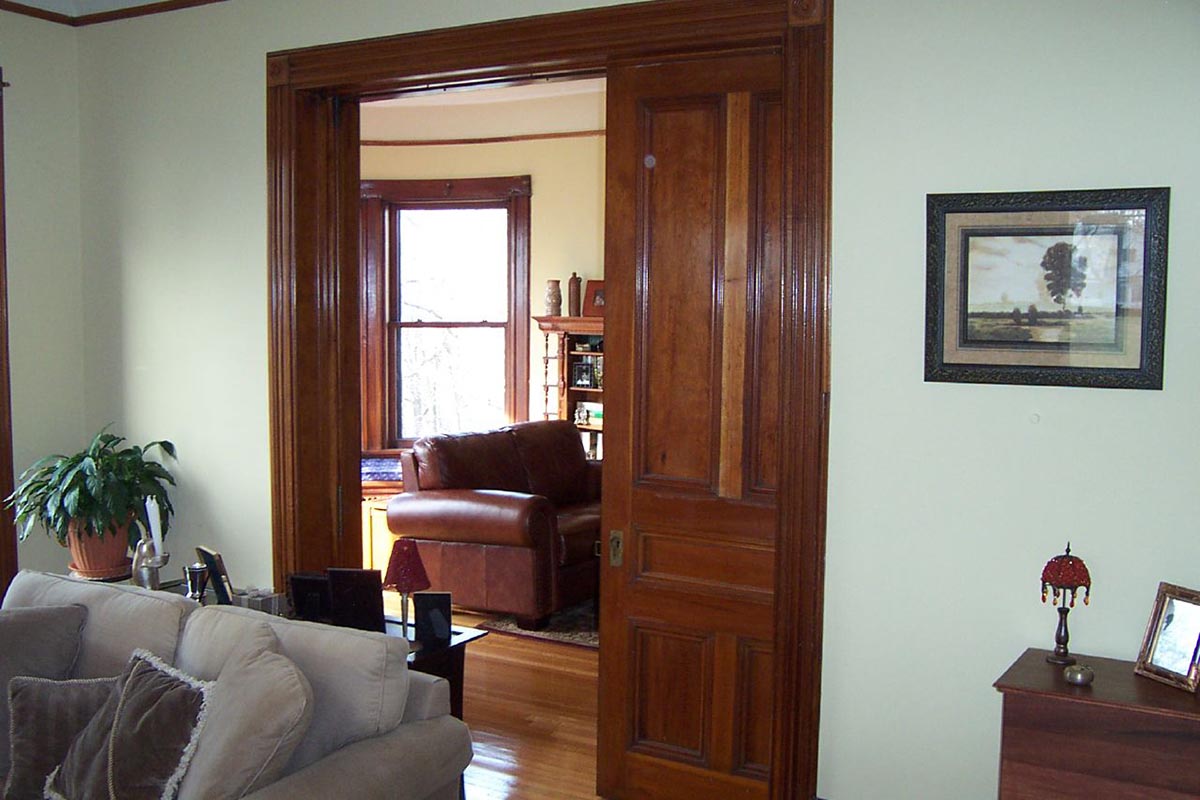

From Fees to Freedom: Richr’s Game-Changing Wealth Strategy in Real Estate, by Jason Rubin, and Glenn Orgin
Have you ever thought about why it costs 6% to…
January 9, 2024
Table of Contents:
The Pros and Cons of Pocket Doors
What are some disadvantages of pocket doors?
Are pocket doors better than regular doors?
Are pocket doors making a comeback?
for smaller apartments and homes. Additionally, sliding pocket doors can be a great addition to break up play, create privacy, and add class to a home. Finally, with so many design options, adding a pocket door or replacing a regular door with a pocket door can change the flow of your home.
We provide you a free home valuation and a breakdown of your closing costs to show you how much you will save and the amount of cash you will receive at closing
Or Call Us +1844-957-4247
Pocket doors are different than regular doors in several ways. However, pocket doors could be a great option depending on the space in your home. Here is how the two types of doors differ.
Typical doors are hinged and open by swinging back and forth. Pocket doors are on door slides and open and close via rollers on a track. The doors slide into openings on either side of the wall.
Pocket doors completely disappear into the walls when fully opened. This allows for more open space on either side of the doorway that a typical door would otherwise obstruct when opened.
Pocket doors gained popularity in the Victorian Era and are still considered a stylish and space-saving home feature. They add privacy to smaller spaces without the overhead clearance needed for a typical hinged door.
Pocket doors are coming back into style, with many living in smaller apartments and condominiums. The sliding doors are space-saving and more beneficial in some cases than others. Here are the positives and negatives of sliding pocket doors.
Pocket doors save you space by sliding into walls rather than an open swing door that takes up space. As a result, you can have more furniture or open space in rooms with pocket doors.
Pocket doors can create an appealing feel in a space that may be more inviting than traditional doors.
Pocket doors are hung on a ceiling track rather than a floor track, creating an appealing boundary between rooms without an obstacle on the floor to walk or trip over.
Pocket doors need the entire space of the wall they slide into, so walls with pocket doors cannot have switches or outlets installed.
Pocket doors require the use of a small latch to close the door that is on the door’s edge. The release of the latch must be done manually and could be a challenge for some homeowners.
It isn’t easy to lock pocket doors. Some doors contain locks but are more expensive and traditionally used on non-sliding doors.
Accessing the inside of the walls for the pocket door hardware can be difficult if the track or hardware needs to be repaired or replaced.
Pocket Doors typically come as single solid panels that are 36-inches wide and slide on tracks into the wall. In addition to single sliding pocket doors, there are several other types of pocket doors.
Double pocket doors consist of two doors instead of just one single pocket door. Double pocket doors slide into adjacent walls to the other pocket door. The doors, when closed, meet in the middle. Double pocket doors are great for larger entryways such as those to a living or dining room. There are several styles and types of double pocket doors, and they work well in rooms with plenty of wall space to hide the doors.
French pocket doors use two doors similar to double pocket doors but are designed for smaller spaces and come in the standard 36-inch size. The doors are also narrower, so only 18 inches of wall space is needed on each side to hold the doors. As solid panels or glass panes, French pocket doors can be added for style. The French pocket door provides class and sophistication to most rooms.
Installing pocket doors with adjoining walls requires a lot of renovation.
First, you must remove the drywall from both sides of the wall. Then, you must remove the wall studs to create an open pocket for the sliding door. After that, you must add a header above the pocket doors to carry the load of the studs. Once the door is installed, you must replace the drywall you removed with new drywall. Finally, you must mud and repaint the wall before installing the new door trim.
Keep in mind that walls with electrical wiring or plumbing running through them are unsuitable for pocket doors. You also won’t be able to install a pocket door in a wall that isn’t at least twice the width of the door. You can convert most regular doors into pocket doors if the wall opening fits the door. However, because the pocket door replaces the wall studs in the door framing, the pocket door needs to be as thick as the wall. Also, the doorway for pocket doors needs to be twice as wide as the pocket door.
It’s time to buy smarter. Richr gives you cash back helping you buy the home of your dreams.
Call us now on 1-844-957-4247 or Start Searching Your Home Now!
Pocket doors need the entire space of the wall they slide into, so walls with pocket doors cannot have switches or outlets installed.
Pocket doors require the use of a small latch to close the door that is on the door’s edge. The release of the latch must be done manually and could be a challenge for some homeowners.
It also isn’t easy to lock pocket doors. Some doors contain locks but are more expensive and not traditionally used on sliding pocket doors.
Accessing the inside of the walls for the pocket door hardware can be difficult if the track or hardware needs to be repaired or replaced.
In some cases, pocket doors may be better than regular doors. However, the walls in the space need to accommodate the doors. There are several benefits to pocket doors, including:
Yes, they are making a comeback. They are great for small spaces, adding privacy, and making a design statement in a home.
Pocket doors are a perfect solution for smaller bathrooms and other spaces in the home that don’t allow room for a full swing door. They are great at creating a private space within a larger area. Design-wise, pocket doors provide another surface to experiment with paint colors and textures to make a statement that can be visible or hidden at any time. Also, because pocket doors were so popular in Victorian homes, adding them to newer homes can give the house a more historical feel and a touch of elegance. You can even use antique pocket doors salvaged from old homes.
Pocket doors support a significant design trend in homes in open concepts and spaces that seamlessly flow between indoor and outdoor spaces. Pocket doors can consist of several panels that open to the outdoors to create a sophisticated connection between the home’s interior and the exterior.
Pocket doors are much more expensive to install than a standard door. The average cost range to install a pocket door is between $800 and $2,500, with most people paying around $1,050 to install a 36-inch solid wood pocket door in an existing wall.
No, pocket doors are not good soundproofing. They are more of a design statement and create visual privacy between spaces. The doors can be soundproofed, but it is expensive.
Pocket doors are much more expensive to install than regular doors. They are two to five times more expensive because you must remove the drywall and the wall studs. You must install the track to support the wall’s structure and hold the pocket doors. Hiring someone who knows how to do the installation is the best plan. Material costs for the door do not vary significantly between the pocket and regular doors.
Most regular doors can be converted into pocket doors if the wall opening measurements fit the door. However, because the pocket door is meant to replace the wall studs in the door framing, the pocket door will need to be as thick as the wall. Also, the doorway for pocket doors needs to be twice as wide as the pocket door.
Yes, you can put a pocket door in an existing wall as long as the wall is wide enough to support the door.
Yes, you can put a pocket door on an exterior wall. The wall will have to be an insulated timber stud wall as a standard block, and a brick wall has wall ties between the bricks.
Pocket doors were around in the 1800s in large homes in the Victorian era. In the 1950’s they popularized once again but have since gone out of style. They are, however, making a resurgence. The tracks can now be installed above the doors rather than below to avoid a tripping hazard.
It would help if you had a 2X6 wall rather than a standard 2X4 wall for pocket doors, along with the following takeaways:
It’s time to buy smarter. Richr gives you cash back helping you buy the home of your dreams.
Call us now on 1-844-957-4247 or Start Searching Your Home Now!
Pocket doors are usually 30-inch or 36-inch doors and are 80 inches tall. You can also build custom pocket doors for smaller and larger passages. The dimensions for single-leaf doors start from a width of 24-inches and go up to 48-inches. Door heights range from a height of 80 feet up to 120 feet.
Installing pocket doors is a great way to add privacy and sophistication to any living area, bathroom, or smaller space. Some homeowners can install pocket doors independently, but many opt to hire specialists, especially for more custom projects. Before tearing down your wall and framing, ensure you know the ins and outs of installing a pocket door.
If you’re looking to buy or sell a house and would like to discuss your option, Richr can help you!
Our fully licensed Concierge Team is here to questions and provide free, objective advice on how to get the best outcome with your sale and purchase.
Ready to get started?
Call us now on 1-844-957-4247 or enter your basic info
below. Our concierge Team will be in touch shortly to help.
Remember, this service is 100% free and there’s never any obligation


If you want the Richr team to help you save thousands on your home just book a call.

